The silvery-white undersides catch the moonlight, and this used to be used as a way to light up and used to light up the path and guide travellers through the ngahere (bush).
I didn’t know that there was silver on the bottom of the fern. They used to flip it to over to show which way they were going.
Room 7 students have been learning all about the life cycle and the cultural significance of the silver fern
I never knew there was small spores before we did the life cycle.
After researching the silver fern and its life cycle, we began a piece of art that showed two different stages of the silver fern—both the full fern fronds and the fiddlehead, which is the koru shape.
Students had to learn to use watercolour. This proved to be a bit challenging. They had to use a small amount of paint so it doesn’t become so dark that you can't see the fine line drawing on top, although not too light that it just becomes watery paper.
You have to use your pencil really lightly because you can see everything through watercolour.
Once the watercolour paint had dried, students then had to very carefully and lightly sketch either the fern or fiddlehead on the top of the watercolour. They needed to make sure it was light enough that it didn’t show through when they went in with the dark pen. They had to use control, and patience to make sure that they followed their sketch and that the lines were smooth.
When you use watercolour, you have to do it lightly so that your drawing can stand out. Erica-May
Students were pleased with the results of their artwork and enjoy to show it off
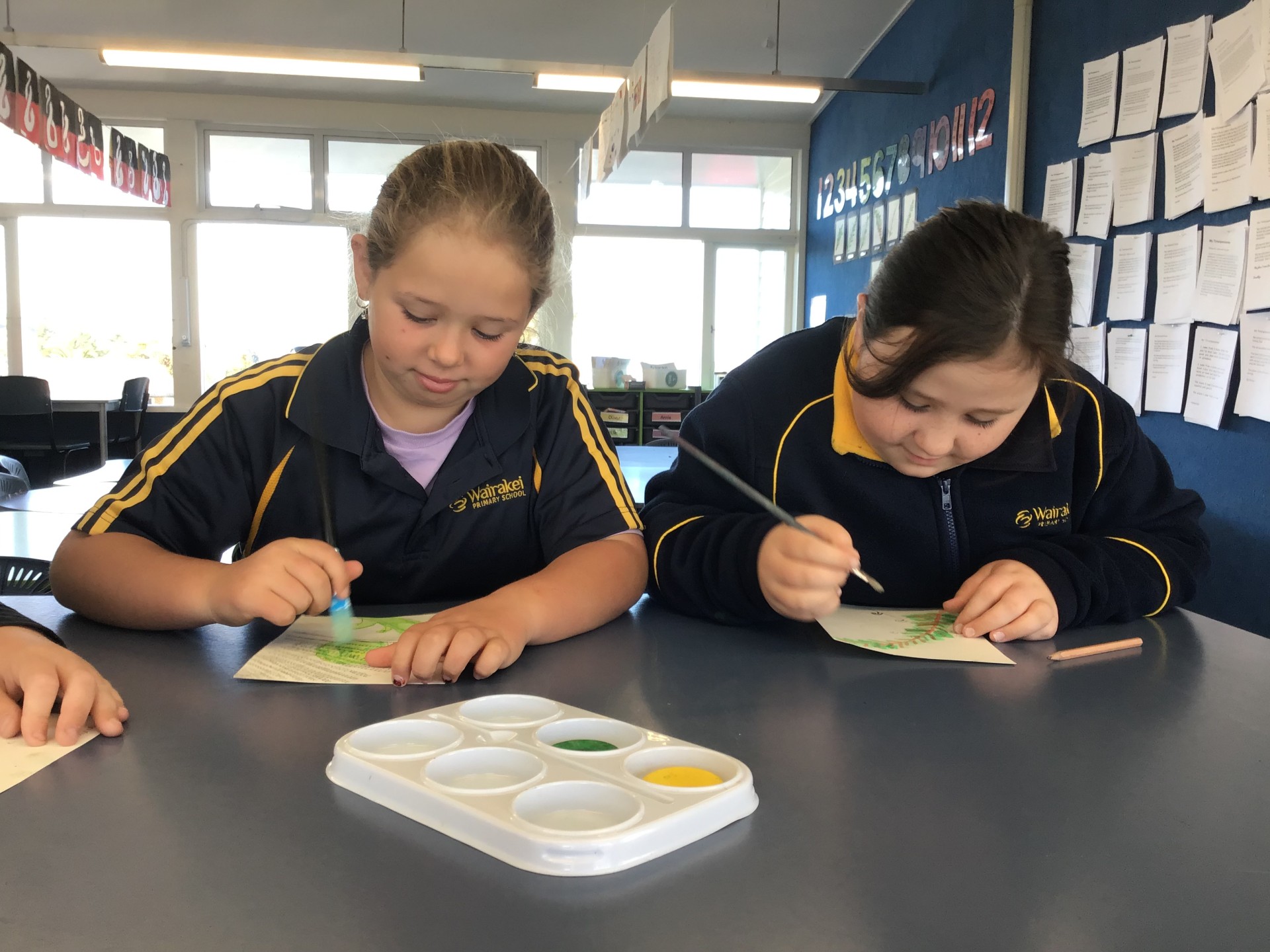
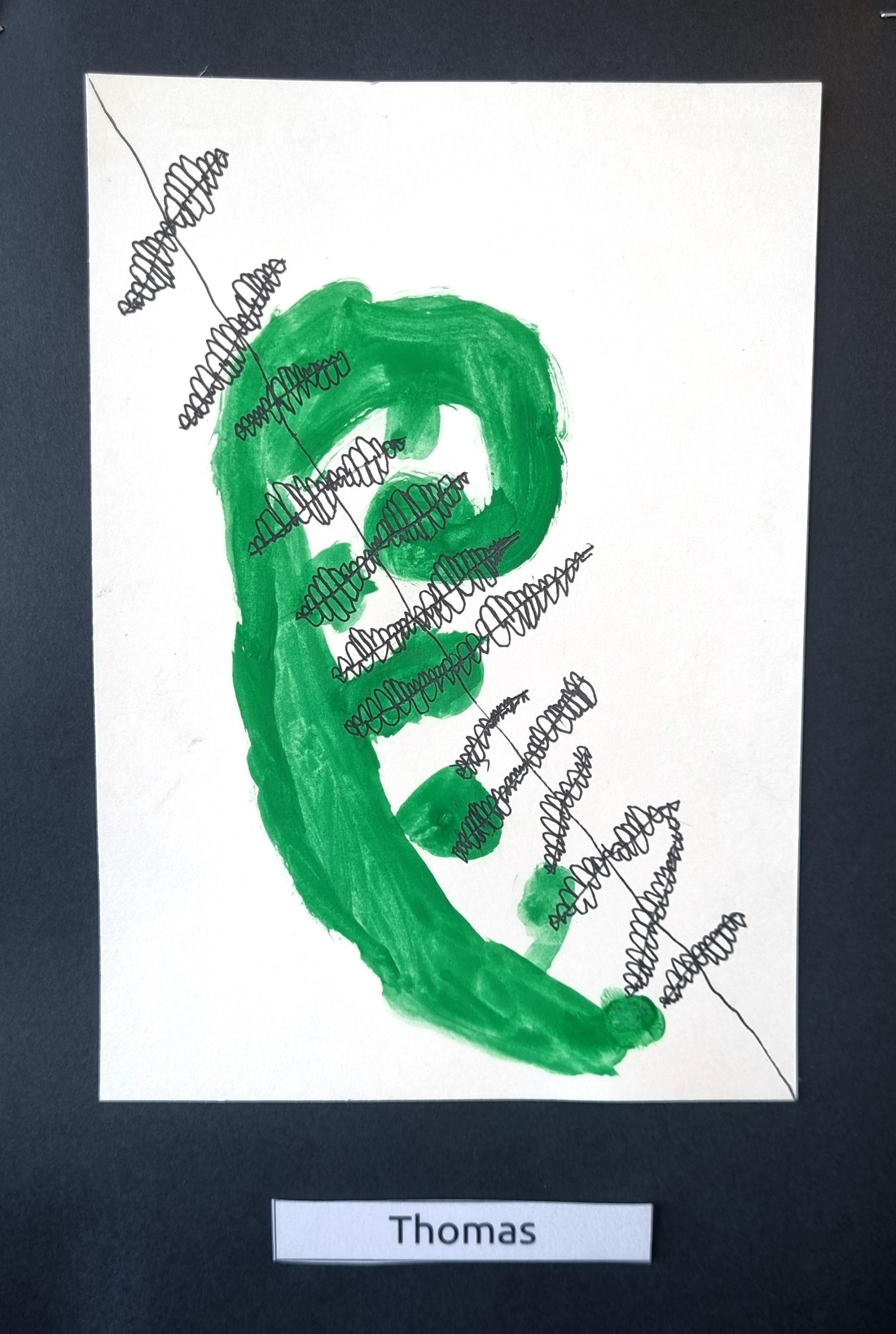
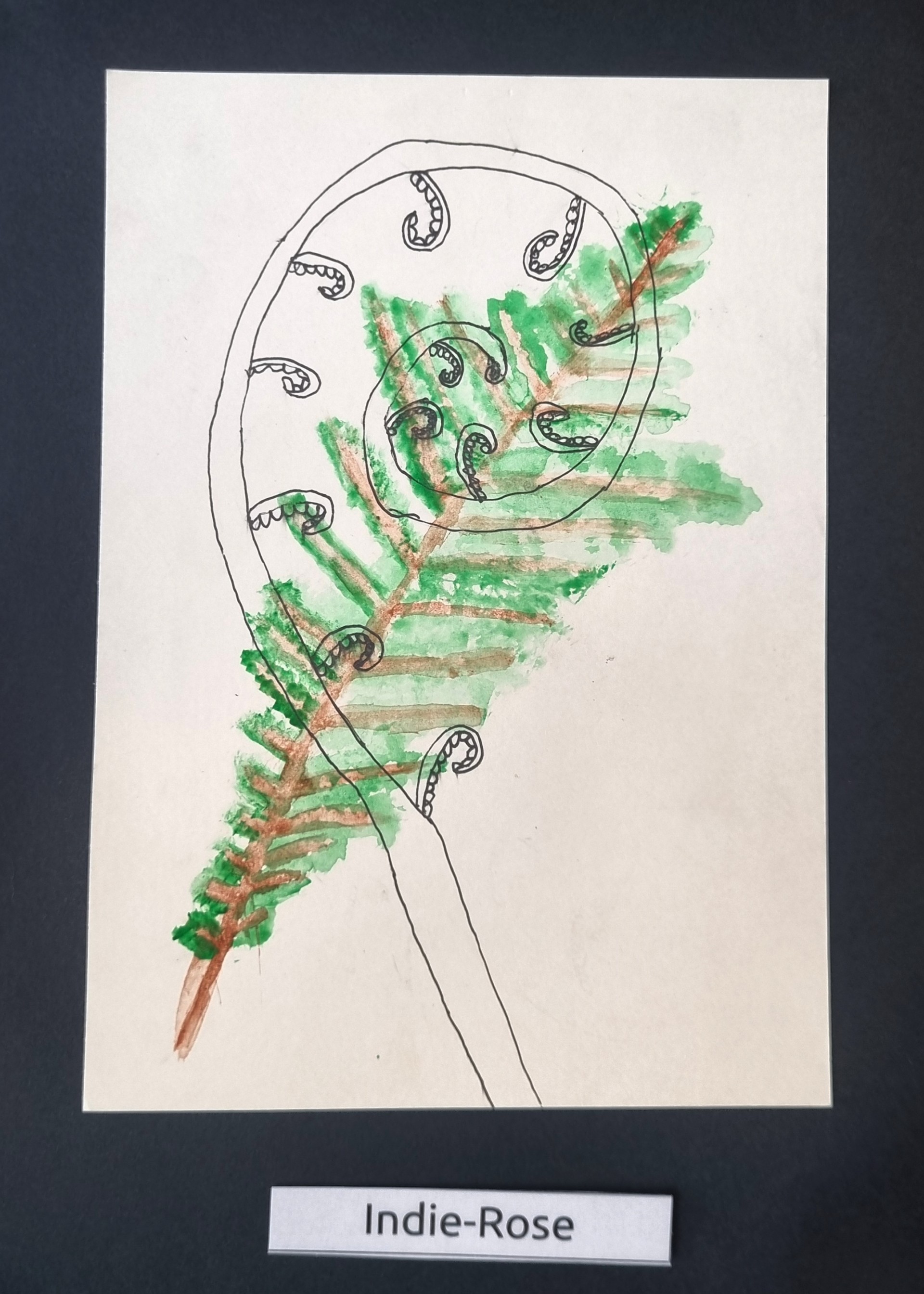
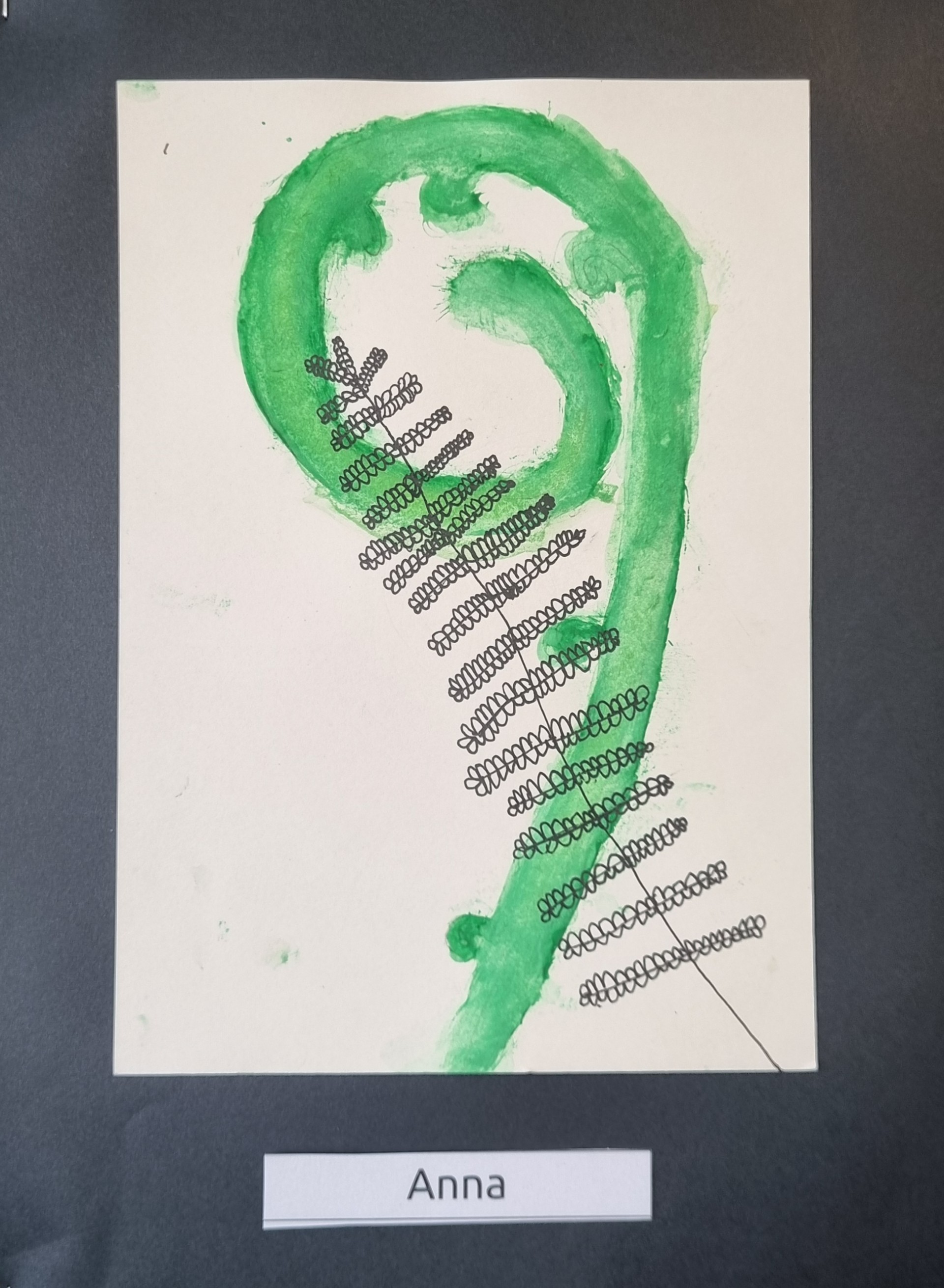
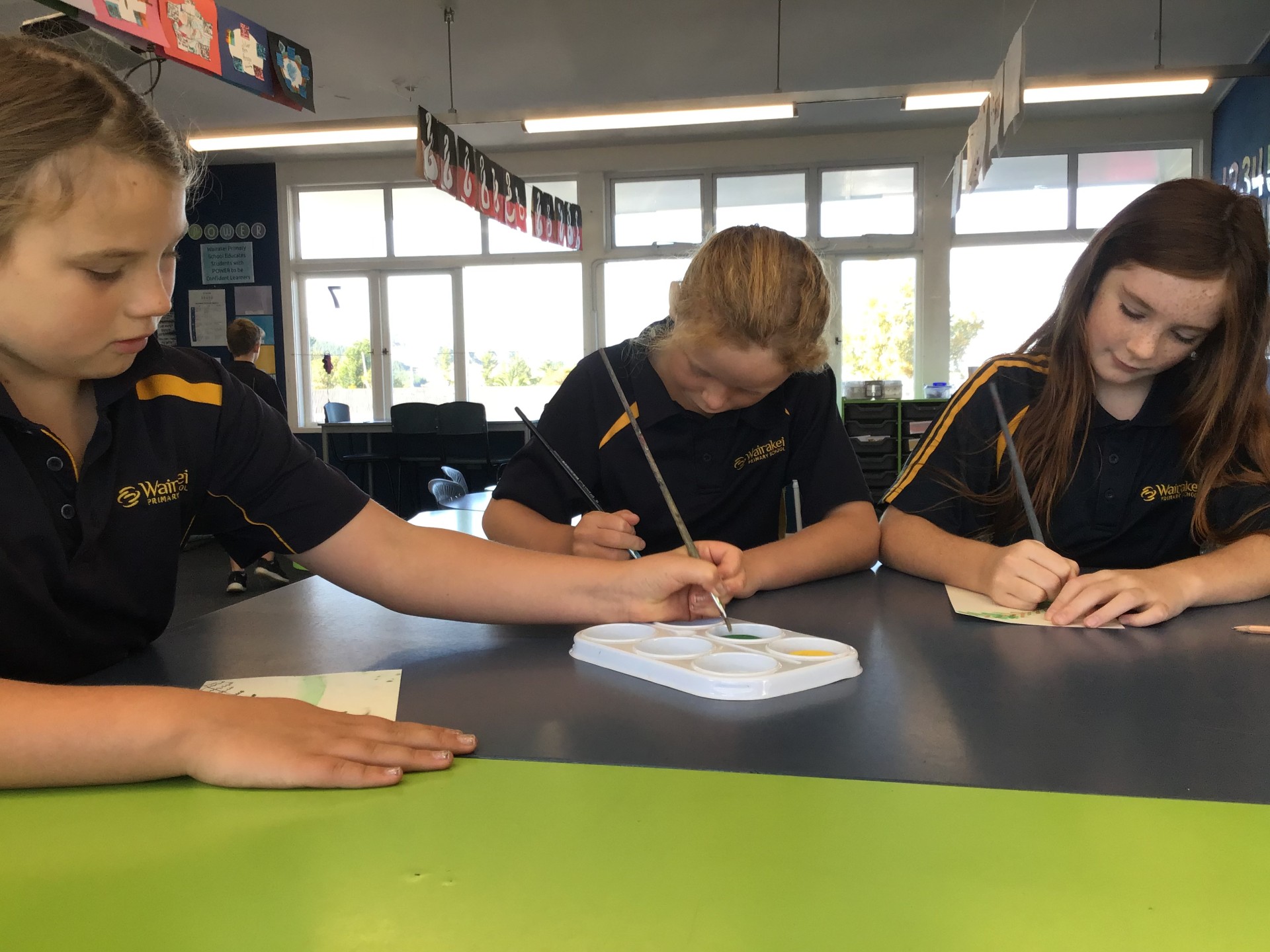
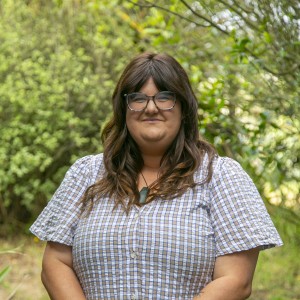

Comments
No one has commented on this post yet.